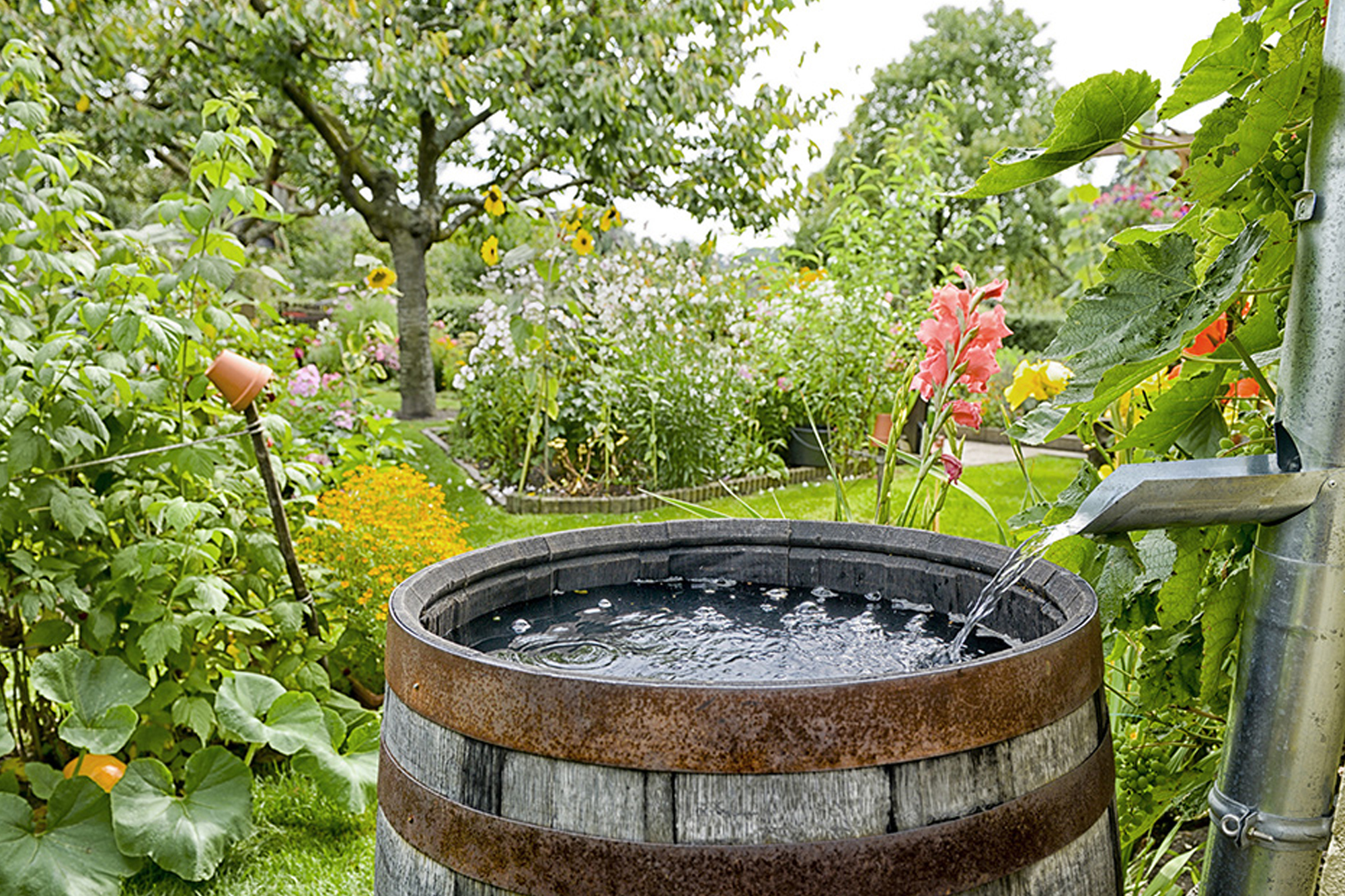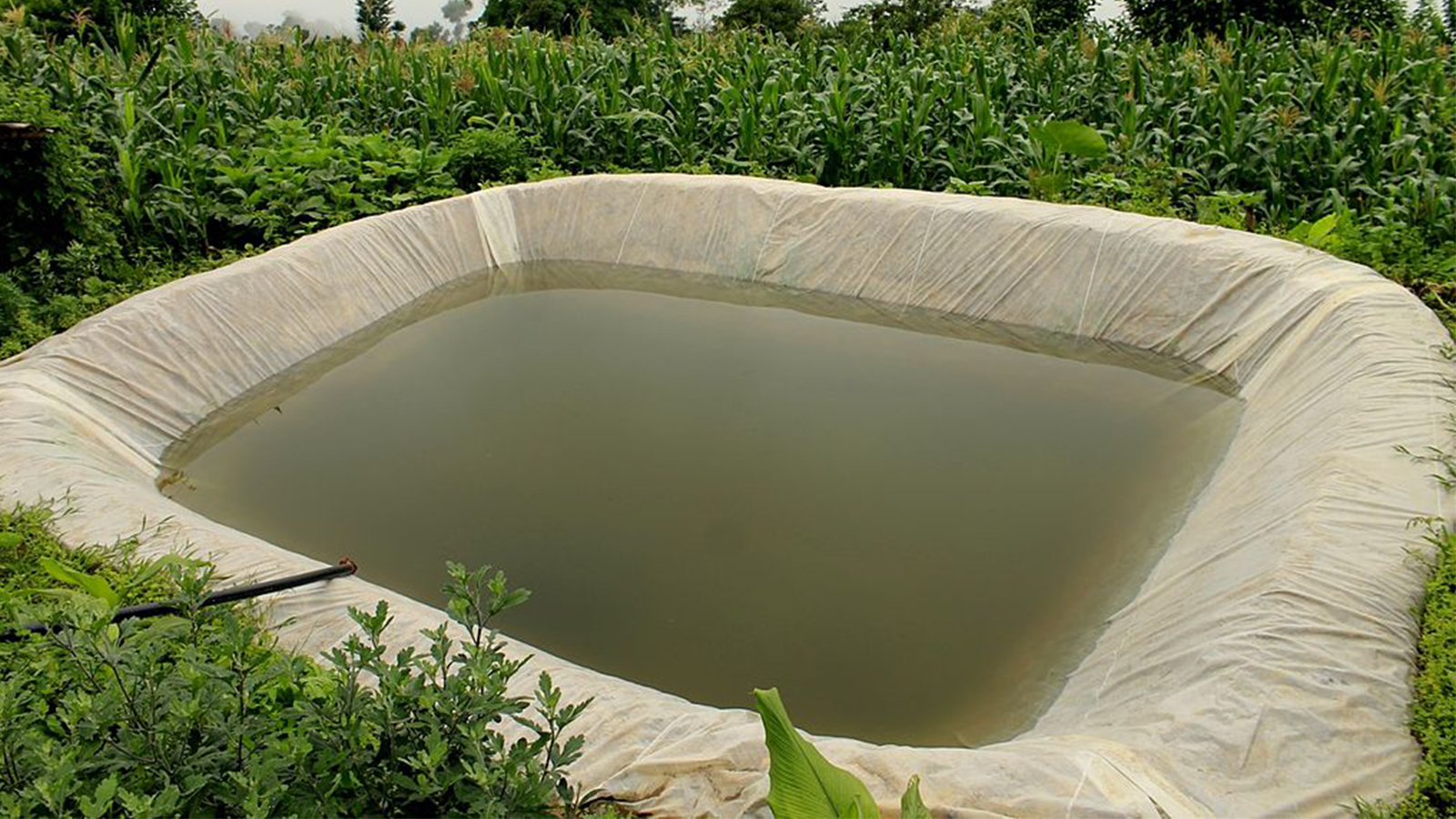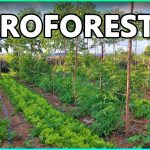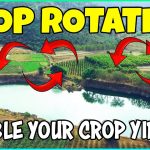Today let’s discuss about some of the points to improve rainwater harvesting in your farm. Let’s look at five points that will improve rainwater harvesting in a farm.

Number one, creating large bunds, dams and catchment areas to catch the rainwater and holding it from flowing out of your farm. Say the farm is located in a slope. This is the high point and this is a low point. You want to have catchment areas on the high point. So ideally outside of your boundary you would like to have trenches which catches the flowing water and then whatever water is caught by that those trenches are sent into a pond on the top section say over here and the collected water here we try to seep it into the ground and whatever is overflowing has to go through the farm, through the plants, through the drainage system.

Once they go through halfway point, you can have another pond and overflow from that again can go through the lower part of your plantation and again through multiple channels and can converge on the lowest point in another pond before it exits out of your farm. So that way you’re making the running water to crawl, crawling water to stop and stopped water to seep into the ground. Along with the forests on the side and herbascular mycorrhizas and also the plant roots, the absorption of this water into the ground increases.

Overflow from this pond goes into another large pit and that pit is connected to a borewell where the sea water seeping happens into that borewell and the underground water is enriched. As you can see the overflow from that dam has come all the way here into this ditch and this ditch is about 18 feet deep and the collected water is sent into the nearby borewell through a pipe underneath. Okay so this borewell is quite close to the pit that we saw where the overflown water comes and gets collected and around this borewell we have dug another 15 to 18 feet depth ditch and filled it with gravel and this is about 10 feet by 10 feet and 15 feet deep.

So the pipe from that other ditch which has collected overflown water is connected to this pit underground so that that water gets seeped into this bore well recharging its groundwater. So again the water which is overflowing from there that pit goes into the farm and through a drainage system it touches the entirety of the farm and converges back into another water collection center or a pond and then overflow from there is again sent through another bore well and that overflow is again sent through a lower part of the farm again with the multiple drainage system which makes the water touch lot of surface area inside the farm. And then again we put bunds over there for the water to seep into the ground so making the running water to crawl, crawling water to stop and stop water to seep into the ground.
Mantra in the same. Also growing a lot of forest trees in the periphery of your farm with the different species of plants we have their roots going underground which allows the water to percolate inside and seep into underground water system. So it’s very important to have all types of forest plants in your farm or surrounding in your farm. So the banana system that we use in our area in Karnataka and Kerala are a great way to preserve these forests and improve water harvesting as well. So this pond is in the halfway midway of the farm and the water which goes through the different channels of drainages comes back into this gets collected and then overflows back into the farm and the lower levels through different channels.

So the overflow from the higher pond, the ponds from the higher pond go through drainages throughout the farm and they converge back into this pond and once this pond fills up the ore flow again passes through again through different channels or drainages through the farm and again converges so that’s the idea. Yeah so this is another example of how we recharge our boilers by making sure that the flowing water flows through the proximity of the boiler and what you have done is you have dug around the bore well to gain about 15 feet deep and then we have splintered up with the gravel and other porous materials so that the water seeps into the ground. Overflow is again same through shallows, drainage shallows with the farm.
So what’s happening here is we are diverting the water flow back inside the farm. So this is exiting the farm and we have put a small bund and we are diverting all the water into the drainage which goes through the farm. So ideally you want to have one drainage going between two rows of plantation. So two rows of plants you have and then you have drainage and another two rows and then again drainage. So this way we’re going to create these swales and send the water across different parts of the farm. Point number two, creating swales around the farm. So now we can see the channels, the water channels or the drainage which is coming into the farm are sent as swales between the trees.

Every two rows of trees we the water going through and that connecting with the plant roots and also the holes created by macro animals like mongoose, snakes, ants, termites and all these things. The water enters through those channels and it also percolates into the ground much more easily. Point number three, creating pits such as this to collect water and again to absorb the water inside the ground. Point number four creating small bunds in every swale so that you can make the running water to slow down the flow. Point number five the arbuscular mycorrhizae which connect with the plant roots and spread up to 15 kilometers underground helps seep the water better.
See these mushrooms. These mushrooms are just the fruiting body body but underneath there is a mycelial network which spreads across the farm and connects all the roots of all different plants and they help in not only nutrient supply, information gathering and distribution also for water collection. So these mycelial network also allows the rain water to seep into the ground much better apparently up to 15 kilometers. The little tunnels created by all the macro-organisms living in the farm also allows the water to seep into the ground faster.

Having few forestries inside the farm also helps water harvesting. Not only their roots go in absorbing more water, seeping it into the ground, but also they support different types of soil microbiology and also different types of animals, birds who also assist in rainwater harvesting. So it’s definitely good to have forest trees in your plantation. Multi-layer farming also assists in rainwater harvesting as these trees are at different layers, the roots also going at different different supporting its own way of water to seep in. So it helps in the water retention in in our grounds. So multi-layer farming is a good thing as well for rainwater harvesting.
So it is predicted that for the next few years we will have late rainfall or lower rainfall compared to our previous decade. So it’s very important that we do water rainwater harvesting and Collect the rains, especially the the swatheerians or what we call which are coming later October November So we collect we harvest them as much as possible and retain them Retain the water in our farm in our property or in our plantations For a longer time so that we can increase the rainwater harvesting and also the water level, the underground water levels in our farm which will come for our benefit in the later summer months. We make use of gravity and natural flow of the land to assist us with the water from a higher level to a lower level creating pits in between and letting the water pass through much surface area as possible through the farm or filling all the water points of surface area as possible through the farm or filling all the water points.

